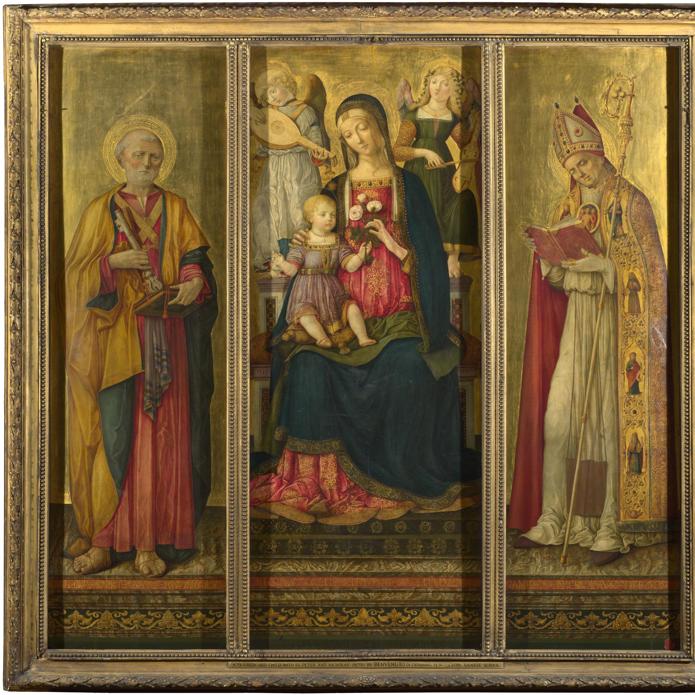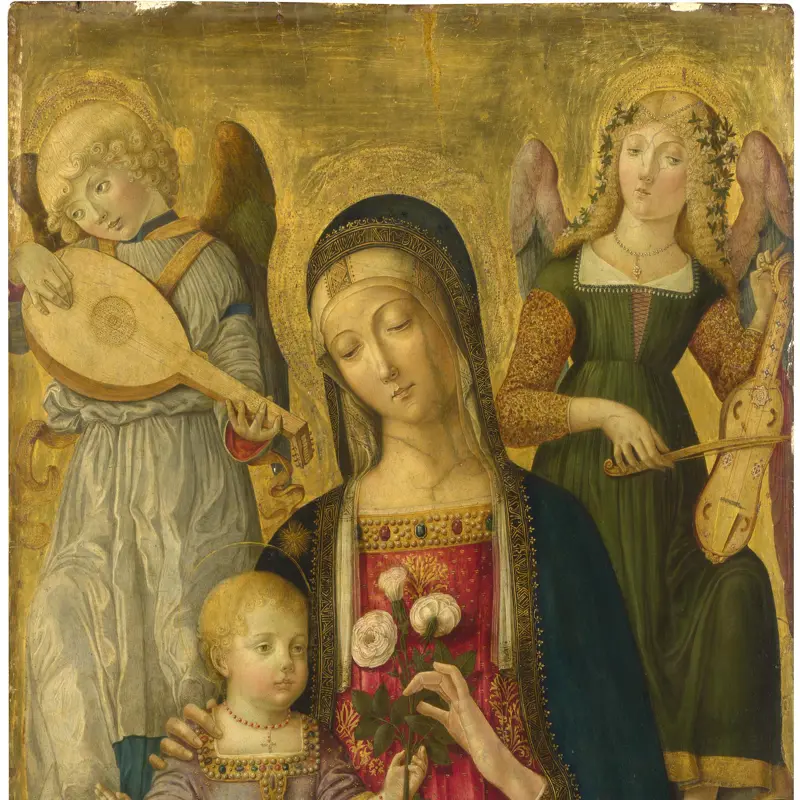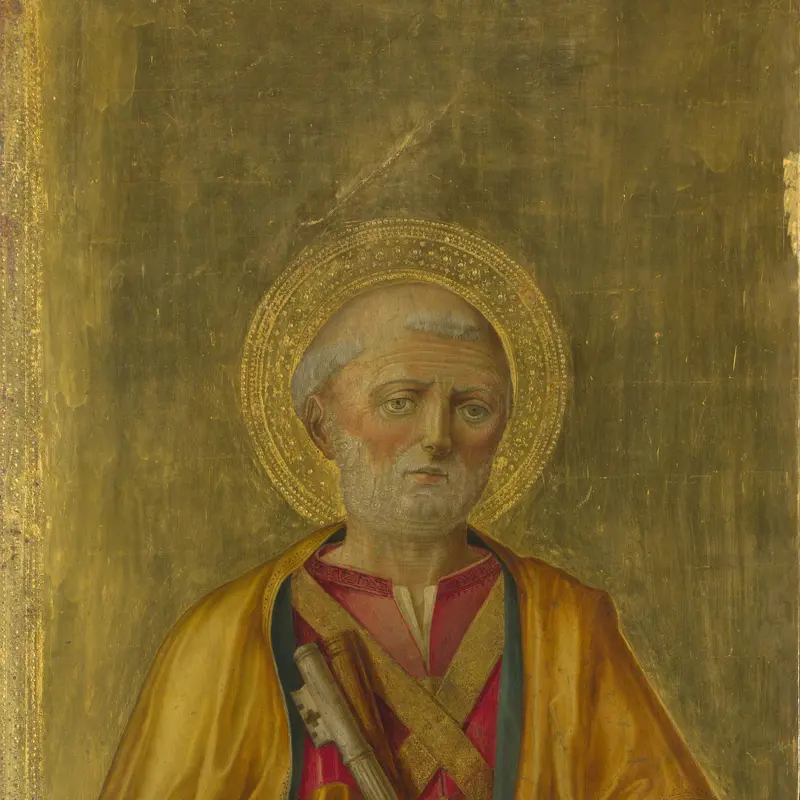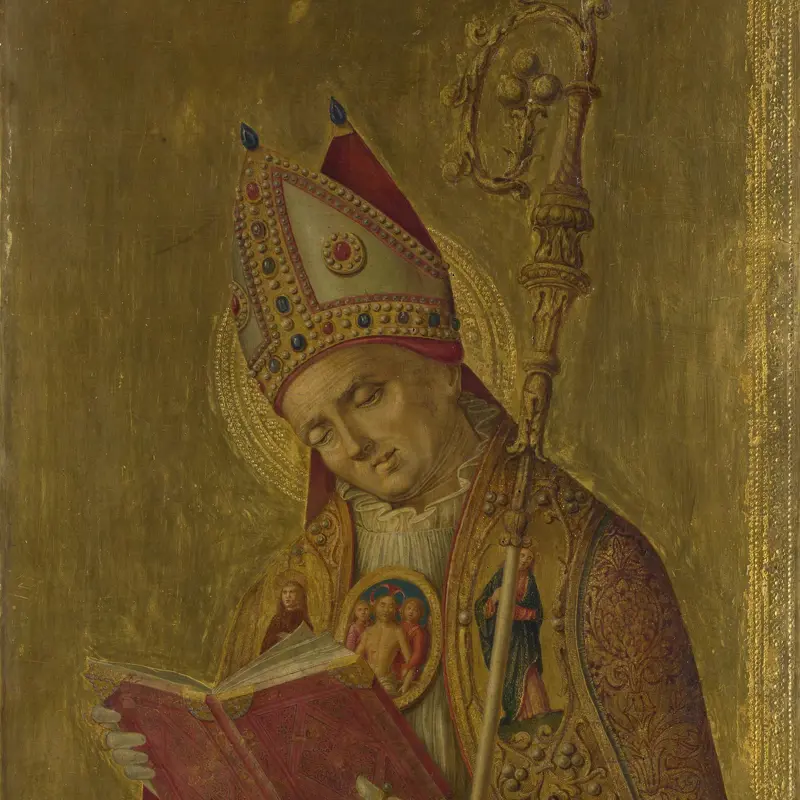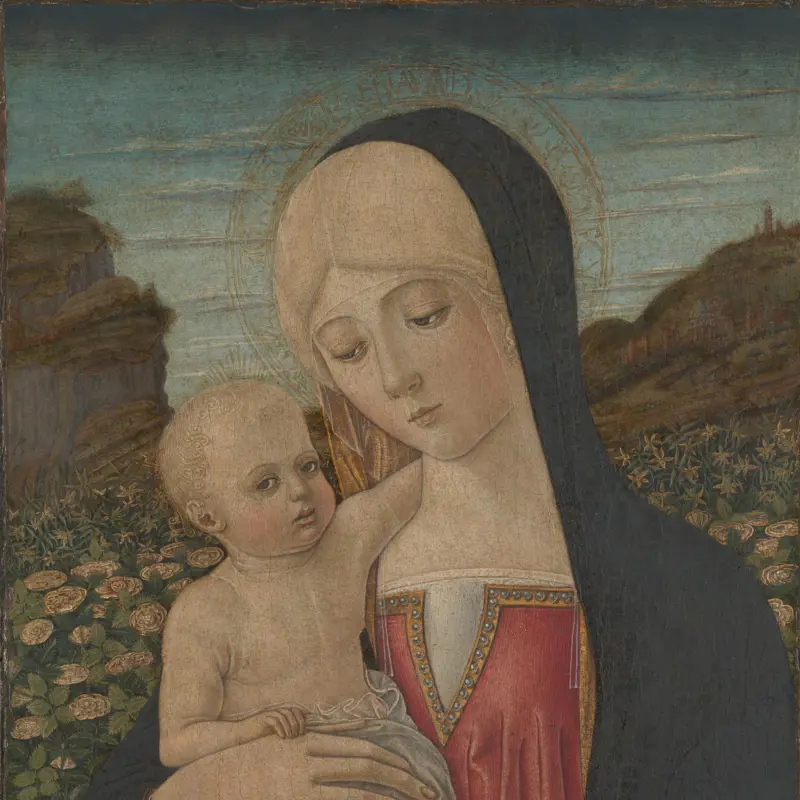Benvenuto di Giovanni, 'Saint Peter', 1479
About the work
Overview
A saint with a bald head and curly beard stands on a marble platform, his large, deep-set eyes looking straight out at us. He can be identified by the large keys which he holds: he is Saint Peter, the first pope, to whom Christ gave the keys to the kingdom of heaven (Matthew 16: 18–19). This is the side panel of an altarpiece painted in 1479 by Benvenuto di Giovanni, other panels of which are also in the National Gallery’s collection.
The shimmering silks, burnished gold background and decorative detail are typical of Sienese painting of the late fifteenth century, but Benvenuto was trying to combine the traditions of Sienese art with some of the innovations of his own time. For example, Saint Peter’s feet are at slightly different angles to the picture plane, and the toe of his left foot protrudes over the edge of the marble platform.
Key facts
Details
- Full title
- Saint Peter
- Artist
- Benvenuto di Giovanni
- Artist dates
- 1436 - after 1509/17
- Part of the group
- Altarpiece: The Virgin and Child with Saints
- Date made
- 1479
- Medium and support
- Egg tempera on wood
- Dimensions
- 170 × 50 cm
- Inscription summary
- Inscribed
- Acquisition credit
- Bought, 1874
- Inventory number
- NG909.2
- Location
- Not on display
- Collection
- Main Collection
- Previous owners
Provenance
Additional information
Text extracted from the ‘Provenance’ section of the catalogue entry in Martin Davies, ‘National Gallery Catalogues: The Earlier Italian Schools’, London 1986; for further information, see the full catalogue entry.
Bibliography
-
1951Davies, Martin, National Gallery Catalogues: The Earlier Italian Schools, London 1951
-
1986Davies, Martin, National Gallery Catalogues: The Earlier Italian Schools, revised edn, London 1986
-
2001
C. Baker and T. Henry, The National Gallery: Complete Illustrated Catalogue, London 2001
About this record
If you know more about this work or have spotted an error, please contact us. Please note that exhibition histories are listed from 2009 onwards. Bibliographies may not be complete; more comprehensive information is available in the National Gallery Library.
Images
About the group: Altarpiece: The Virgin and Child with Saints
Overview
Sienese painting of the second half of the fifteenth century blended the artistic ideals of its own time with a continued reverence for the language of earlier Sienese art. Nowhere is this more true than in this altarpiece, painted in 1479 by Benvenuto di Giovanni, possibly for a church in Orvieto.
In the centre the Virgin Mary is seated on an inlaid throne with the infant Christ on her knee; in the side panels saints stand like statues on a marble parapet which runs across the whole altarpiece. The figures are set against burnished and tooled gold backgrounds, and all are spectacularly dressed in accordance with the Sienese passion for jewels and textiles – but they look convincingly solid underneath their clothes.

